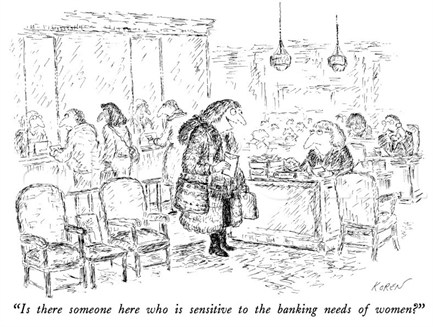What Women Want (From Banks and Credit Unions, at Least)

by. Julia Verbrugge
As a member of Gen-Y, I’m keenly aware that women are a growing force in the workplace, and that they’ve become a majority on college campuses in America. This is fairly common knowledge, but what I didn’t know was that ninety-five percent of women are financial decision makers in their household, or that women control $8 trillion in assets in the U.S. and are expected to control $22 trillion by 2020. After conducting some preliminary research, I quickly realized that the relationship between women and financial institutions is definitely one worth discussing. So banks and credit unions, listen up, because now is the time to be thinking about one of the most important growth markets: women.
While I can’t explain the intricacies of the ever-enigmatic female mind (and don’t we all wish someone could), I can shed some light on how it works in regards to finances. As illustrated by numerous sources, it is clear that women have a different perspective than men when it comes to money and wealth. A BCG white paper,“Leveling the Play Field: Upgrading the Wealth Management Experience for Women”, reports that women don’t necessarily seek to accumulate money; instead, they view it as a way to provide for their families and improve their lives.
Women also want different things when it comes to their relationships with financial institutions. For one, most desire banking relationships rooted in empathy and personalized advice, seeking advice to fulfill their long-term goals. Men, on the other hand, tend toward more business-oriented relationships with financial institutions.
A Mastercard position paper, entitled “Ladies First: Why Women Are the Key to Relationship Banking”, looked at a general group of bank customers and found that price is the primary reason that customers cite for extending their relationship with their primary bank. When results are restricted to women, though, price falls behind priorities such as being rewarded for loyalty and feeling like the institution is looking out for their best interests. This is a telling result, implying that customer service, rather than price, is a foremost priority for women.
continue reading »